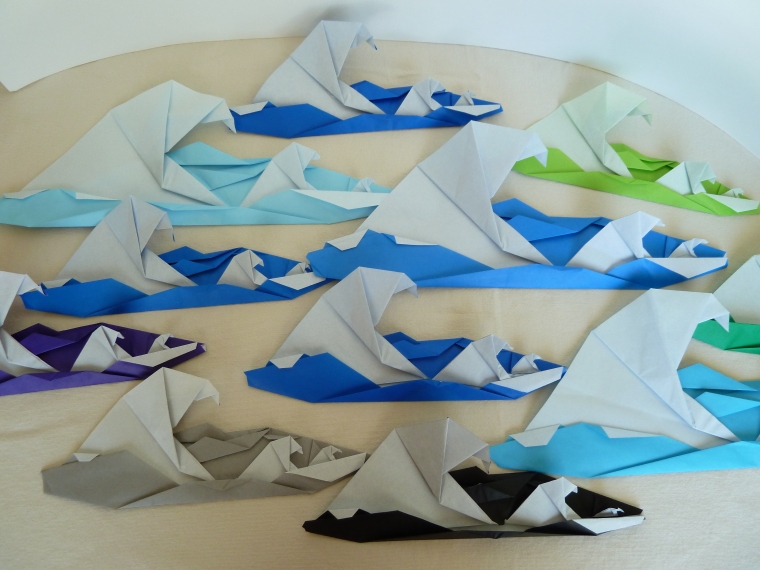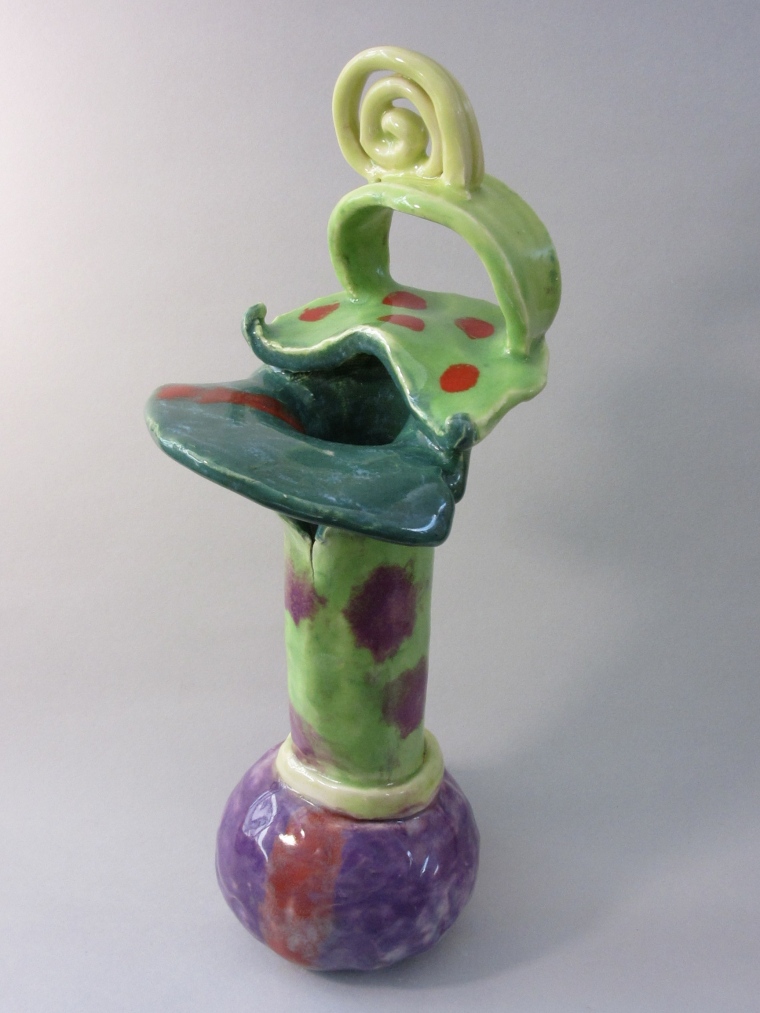I yesterday I folded this origami slinky, shown in the two above videos. I used miura-ori, which is a type of origami where you fold it into an accordion, and then through a series of diagonal folds going through all of the layers, you can create an angle. Instead of making the paper go back and forward so it is a single plane, I made the paper have four ninety degree turns so that it was in the shape of a square. The accordion-like body of it is what made it behave like a slinky. In order for it to “walk” down steps, I need to add some weight on the ends, so I taped a small lead tube to each end. When I was able to make it walk down the steps at my house it was so exciting!
Folded by Sophie Usherwood





























